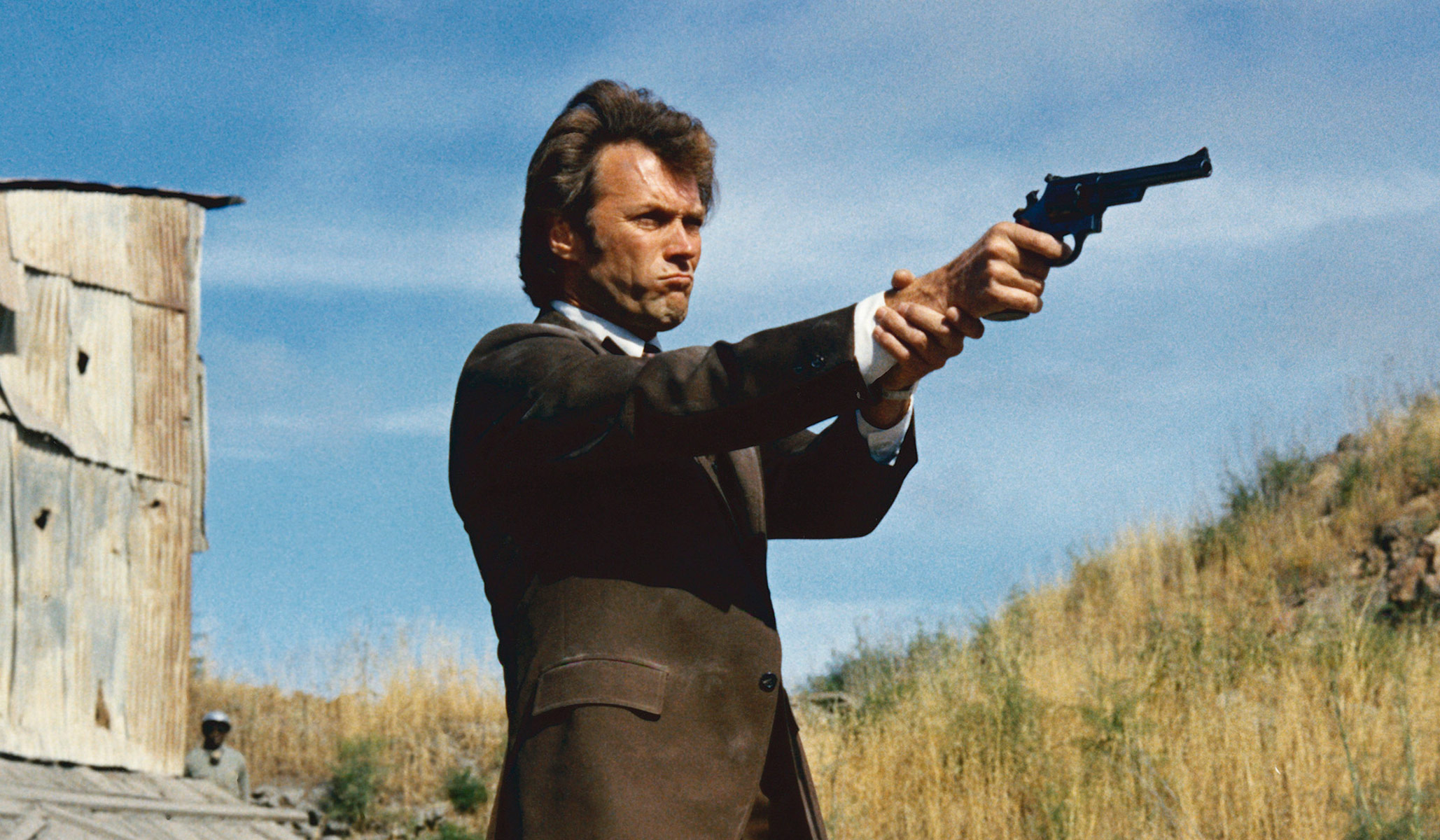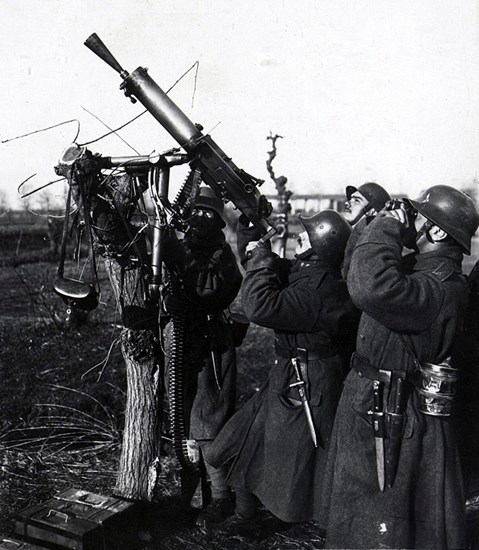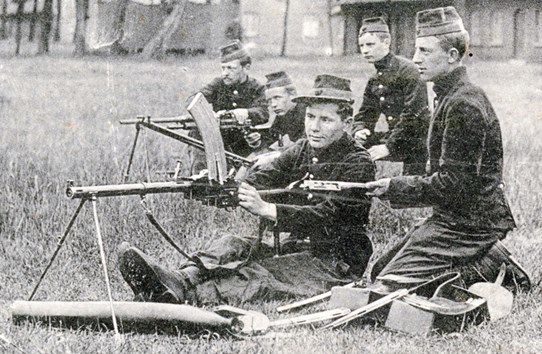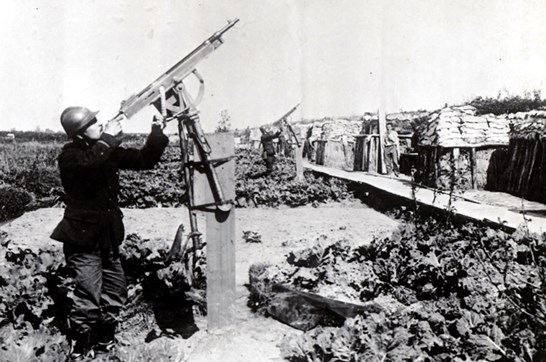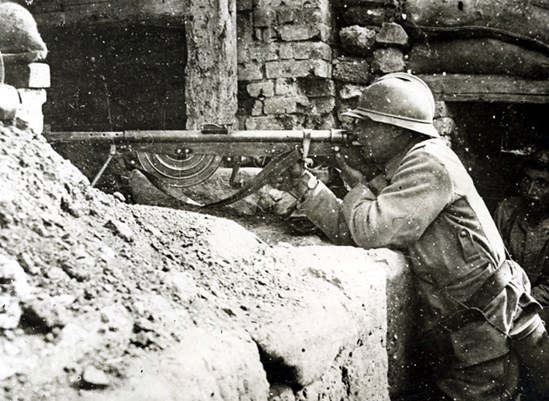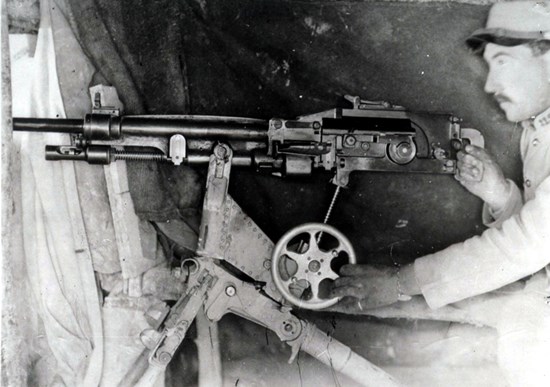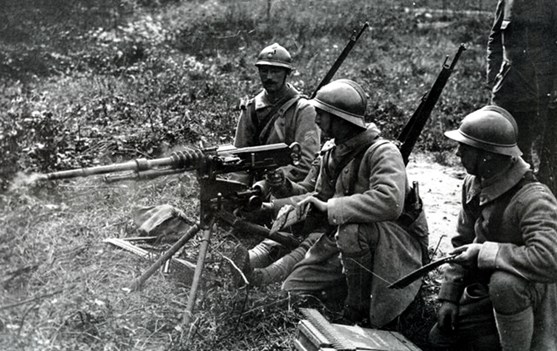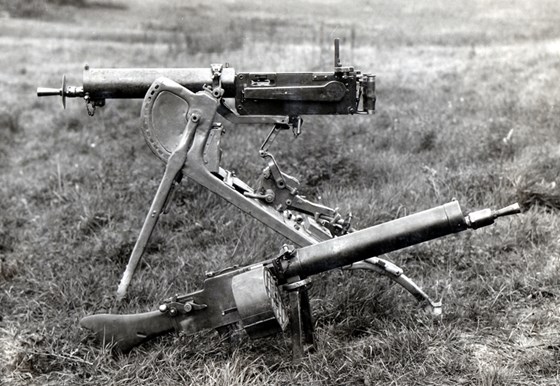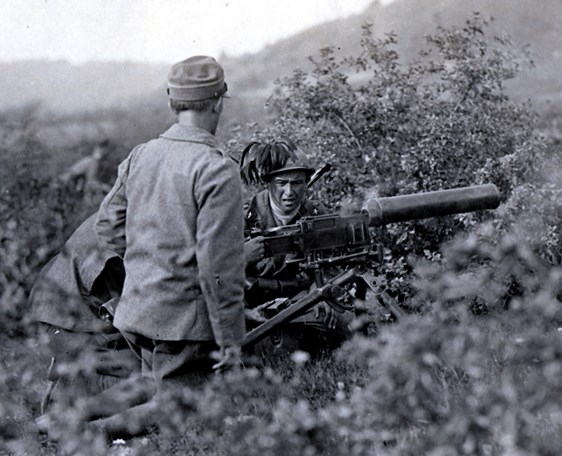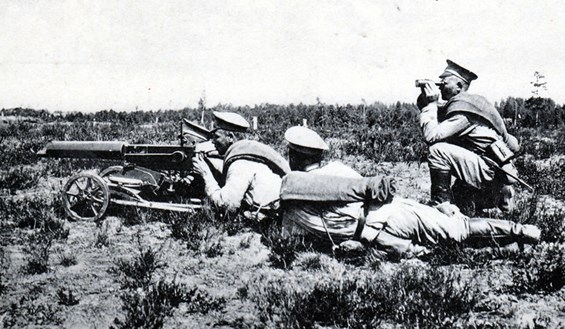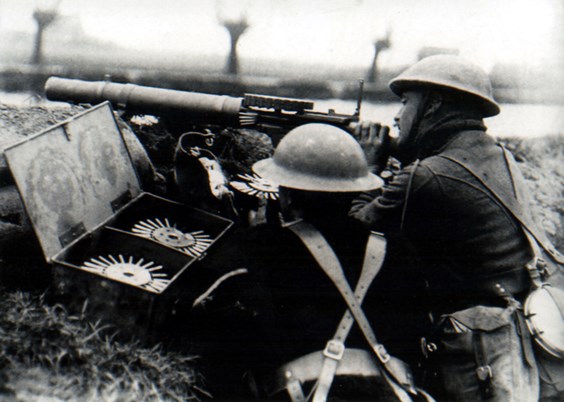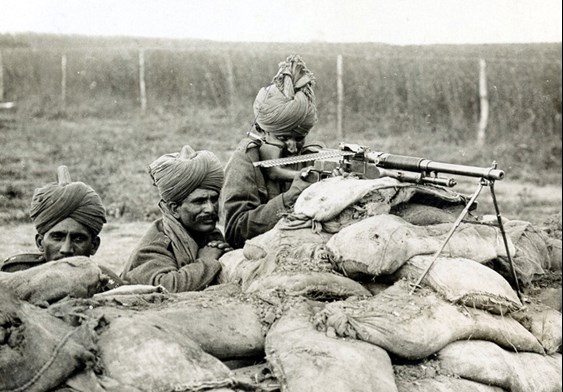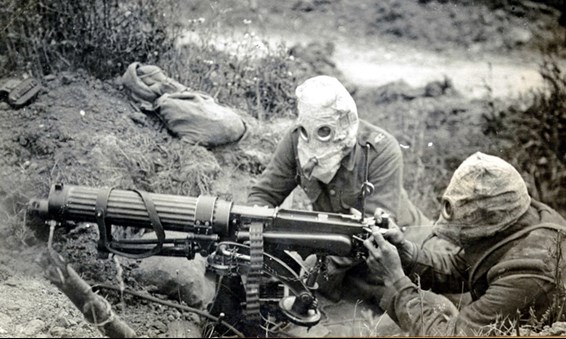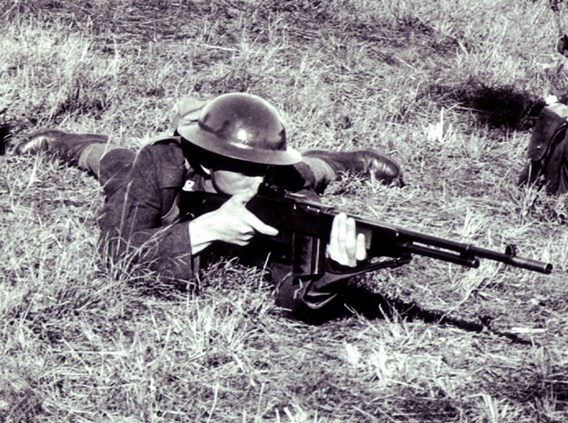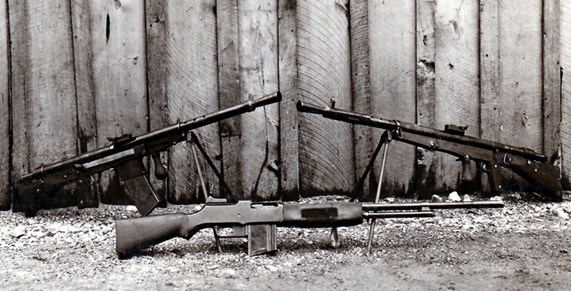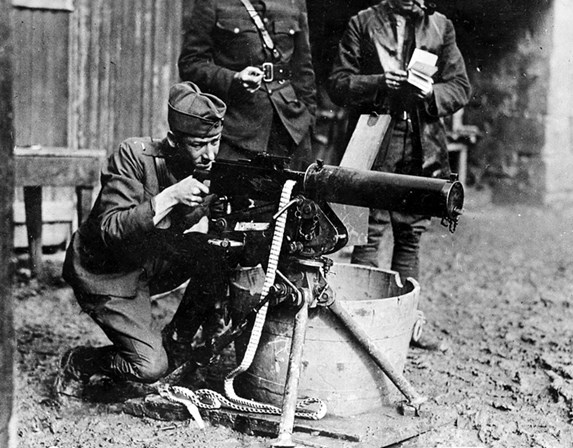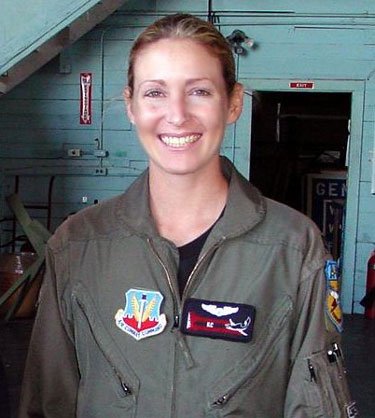Elvis Revolver Memorabilia
One of the people in American history least likely in need of an introduction is Elvis Aaron Presley. His life is one of constant dichotomy: down-home country boy and provocative rock-n-roll superstar. The dusty roads of Tupelo, Mississippi, contrasted with the neon and rhinestones of Las Vegas. Military fatigues to pink Cadillacs. He also blurred lines musically, combining country, blues, gospel, and R&B into a rock and roll style that made him The King.
It resulted in an unmatchable career. 150 albums that reached gold, platinum, or multiplatinum status, 114 Top 40 hits, 31 feature films, 14 Grammy nominations, three TV specials, and numerous performances in Las Vegas. But even numbers as lofty as these fail to capture the man’s musical influence, charisma, charitable nature, sensuality, good looks, magnetism, or kindness. Nor do they come anywhere close to indicating his social significance in the realms of modesty, race, musical stylings, and sheer pop stardom. It is perhaps ironic then, that a man so difficult to categorize is readily identified by first name alone.
It is with this immense significance that Rock Island Auction Company is proud to present Elvis revolver memorabilia and other significant pieces of memorabilia in their May 2017 Premiere Firearms Auction.
Smith & Wesson Model 19-2
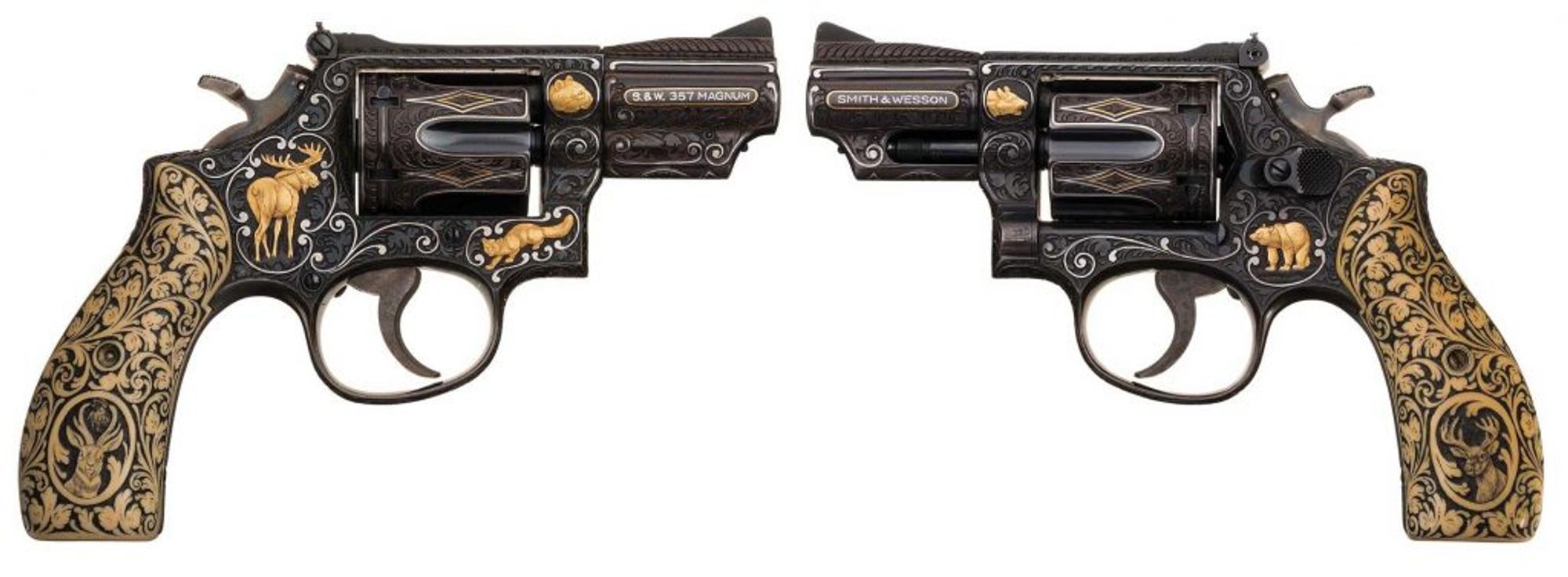
This elaborate, exhibition grade .357 magnum revolver was once part of the personal collection of Elvis Presley. It is accompanied by a mountain of documents and receipts establishing its direct and unbroken line of provenance. This gun was licensed to the King by serial number on Nov 6, 1970. Likely already planning the handgun’s presentation, he then had it sent to Friedrick Wilhelm Heym Co. in Germany for custom embellishment. They clearly spared no expense, slathering the little K-frame revolver with relief leaf and scroll engraving, gold and silver inlaid borders, and five incredible raised gold North American game animals. An expected sight on a fine large game rifle perhaps, but a rare and opulent touch for this small Smith & Wesson.
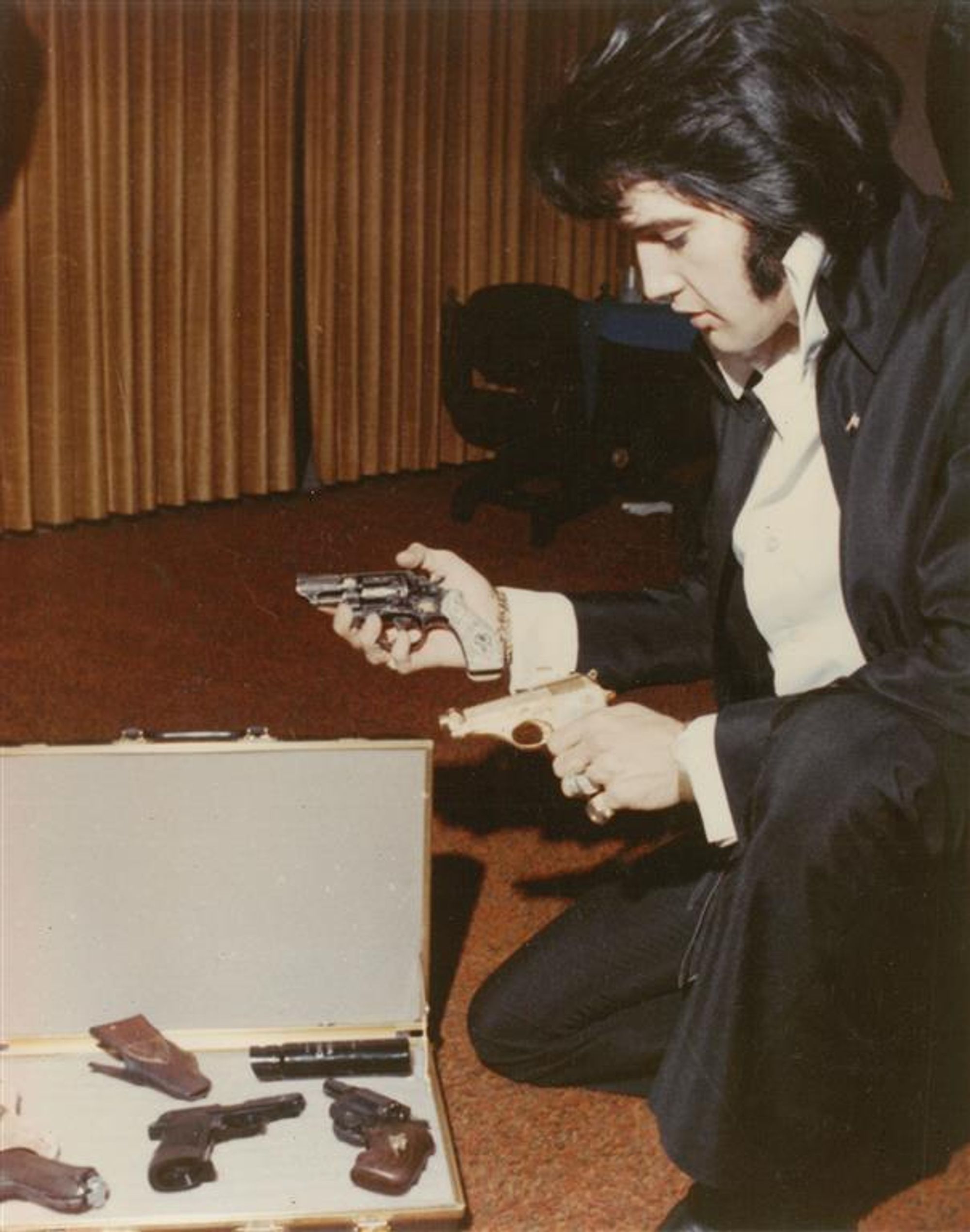
Such exquisite work also extends to the staghorn grips which have been elaborately engraved in a similar vine and scroll pattern and feature two engraved game animals of their own. Not a square inch of this gun was left undecorated, a feat not unsurprising to those familiar with Elvis’ style during that time. Once completed, he brought the Smith & Wesson along on a trip to Washington D.C. and presented it to Vice President Spiro Agnew that same year. Unfortunately for Agnew, he was only able to keep the presentation revolver for a short period of time before returning it as he was under investigation for corruption, which would eventually result in his resignation and other penalties.
With the Smith & Wesson back in the King’s possession, it was only a matter of time before he would find occasion to present the handgun created for such a purpose. That opportunity came when some of Elvis’ friends were going to be stranded at a local airport. Elvis called the sheriff, Gene Barksdale, to call in a favor and have his friends picked up. Such close communication was not irregular as Presley was a great friend to law enforcement, frequently gifting local departments donations, cars, equipment and uniforms for their softball team, and even paying the funeral expenses for a fallen officer. That night, Sheriff Barksdale left with his nephew, an administrative assistant, picked up the hapless travelers and shuttled them to Graceland. While Elvis was talking to Sheriff Barksdale the subject of guns was brought up, and before long he said, “Well, sheriff, I got something for ya.” The King left the room and when he came back, he had this very Smith & Wesson Model 19-2 in his hand and presented it to Sheriff Barksdale, much to the sheriff’s complete surprise. At a later date, Sheriff Barksdale passed that Smith & Wesson Model 19 on to his nephew, the administrative assistant who helped ferry the travelers that night. From that nephew, this incredible Elvis revolver memorabilia comes to Rock Island Auction Company and to gun collectors and Elvis enthusiasts around the world.
Colt Python of Elvis Revolver Memorabilia

Lot 472: Historic Extremely Well-Documented Exhibition Quality Engraved, Inlaid and Carved Colt Python Double Action Revolver Presented by The King of Rock & Roll Elvis Presley to Employee Richard Grob. The Elvis revolver memorabilia sold for $172,500 in May 2017.
It’s no secret that in recent years the popularity, and resultant prices, of Colt Python double action revolvers has skyrocketed. Add to that the ever-present demand and the consistently high prices of Elvis memorabilia and you’ve set the stage for a bidding war at auction. This Colt Python was also owned by Presley and is accompanied by its original registration to the King. Even as early as 1973, the Elvis revolver memorabilia was featured in Guns Magazine so while it has been in the public eye for some time. But, it has not been available for public sale since Elvis himself bought it. Until now.
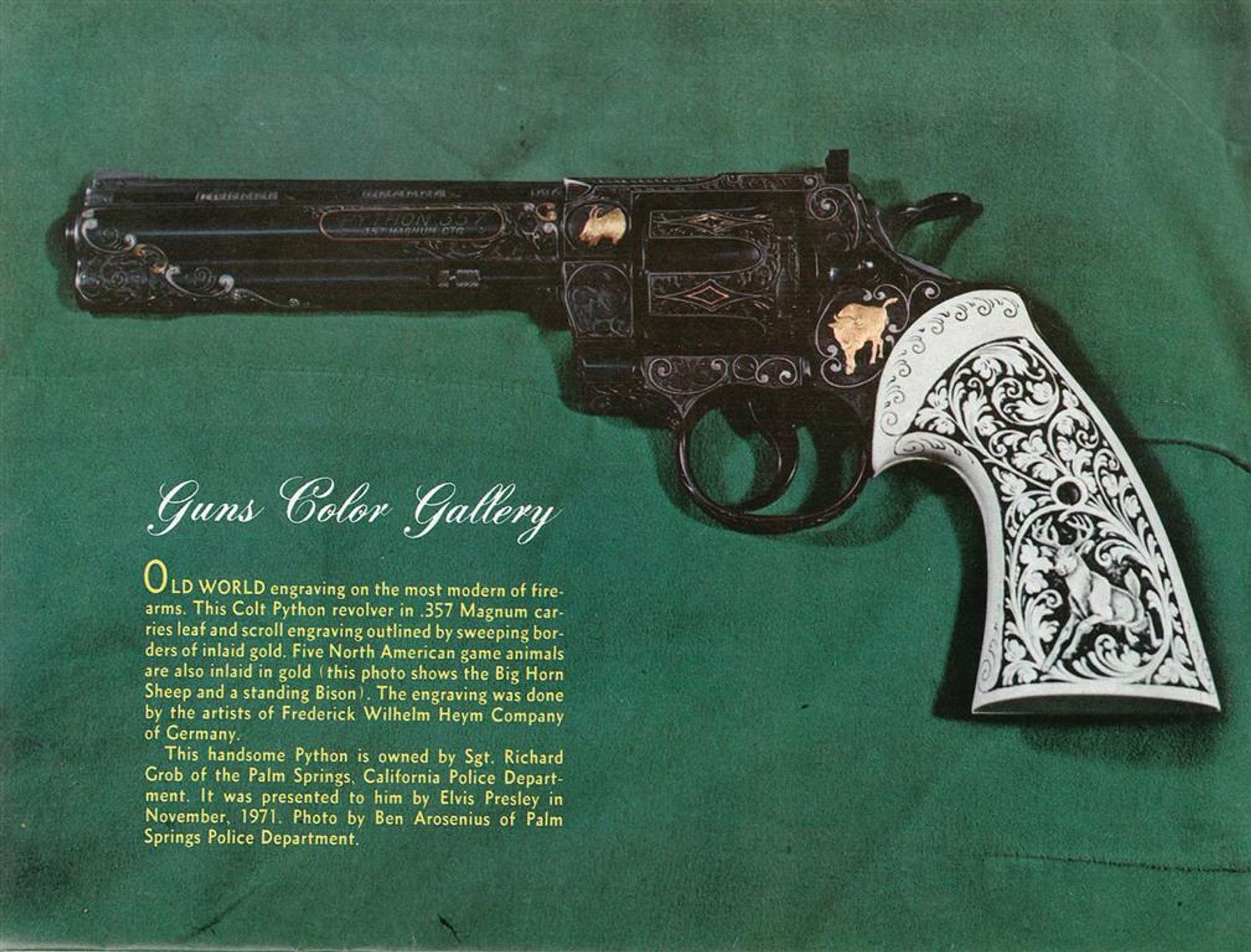
As can be seen, it is decorated in the same style as the Smith & Wesson Model 19-2, with the work again performed by Friedrick Wilhelm Heym Co. in Germany. This sumptuous snake gun was presented by Elvis to Richard Grob, the Director of Security and Operations for Elvis Presley Enterprises. Grob worked for Presley from 1967 until his death in 1977 and in that time became a close personal friend and confidant. He advised the King on many of his firearm purchases and frequently accompanied him to firing ranges. We may have him to thank for some of the wonderful Elvis revolver memorabilia that exists today!
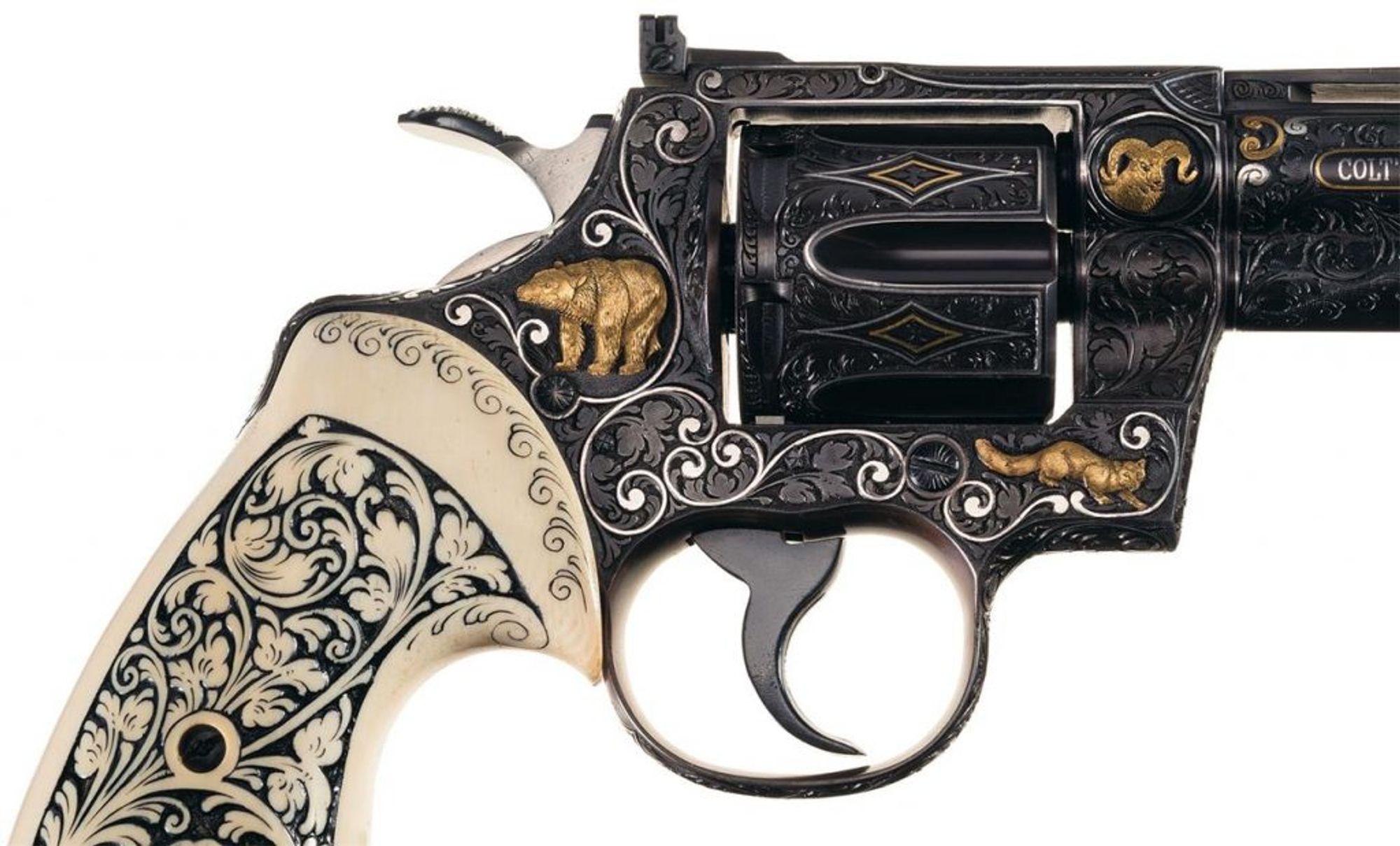
This Colt Python enjoys 95% coverage of the same masterfully executed relief leaf and scroll engraving that was ordered on his Smith & Wesson Model 19. Silver and gold inlays abound, often serving as borders, and again five raised gold North American big game animals make their presence known around the frame. The scrimshaw-esque grips are again a perfect compliment with their sweeping scrollwork framing a leaping stag on one side and a pouncing mountain lion on the other.
Elvis’ Shelby County Sheriff’s Badge
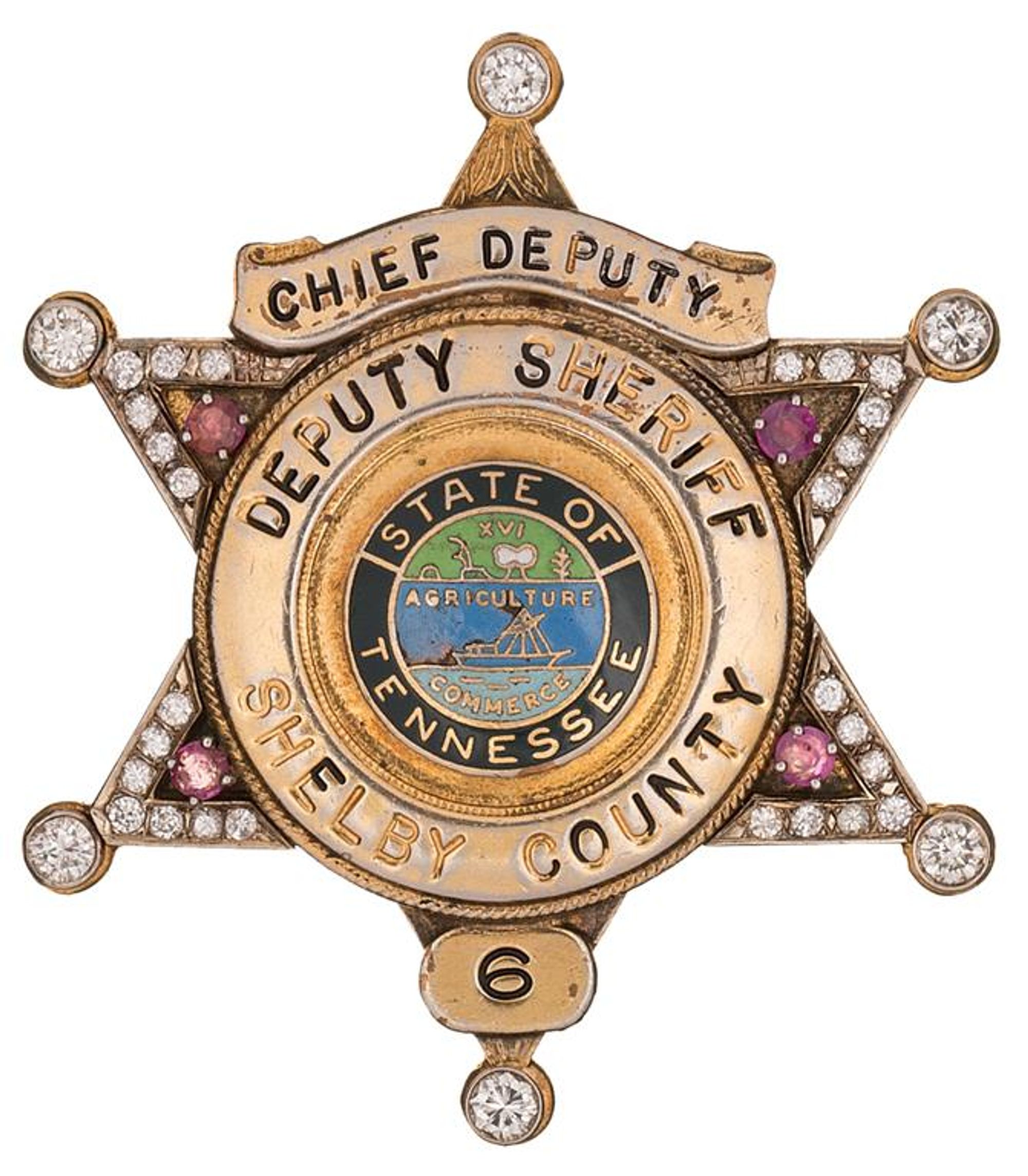
Now, this may not be Elvis revolver memorabilia, but it is still an iconic piece of for collectors. As aforementioned, Elvis was a big supporter of law enforcement, frequently donating to police departments in a number of different ways, adding yet another layer of complexity to the man. One might expect him to be close with and support law enforcement. After all, they often escorted him during his tours and performances. However, given Elvis’ rock-n-roll persona of sexuality and rebellion, along with his playing of music from both sides of a then very real color line, it is all too plausible to see how he could have clashed with authority.
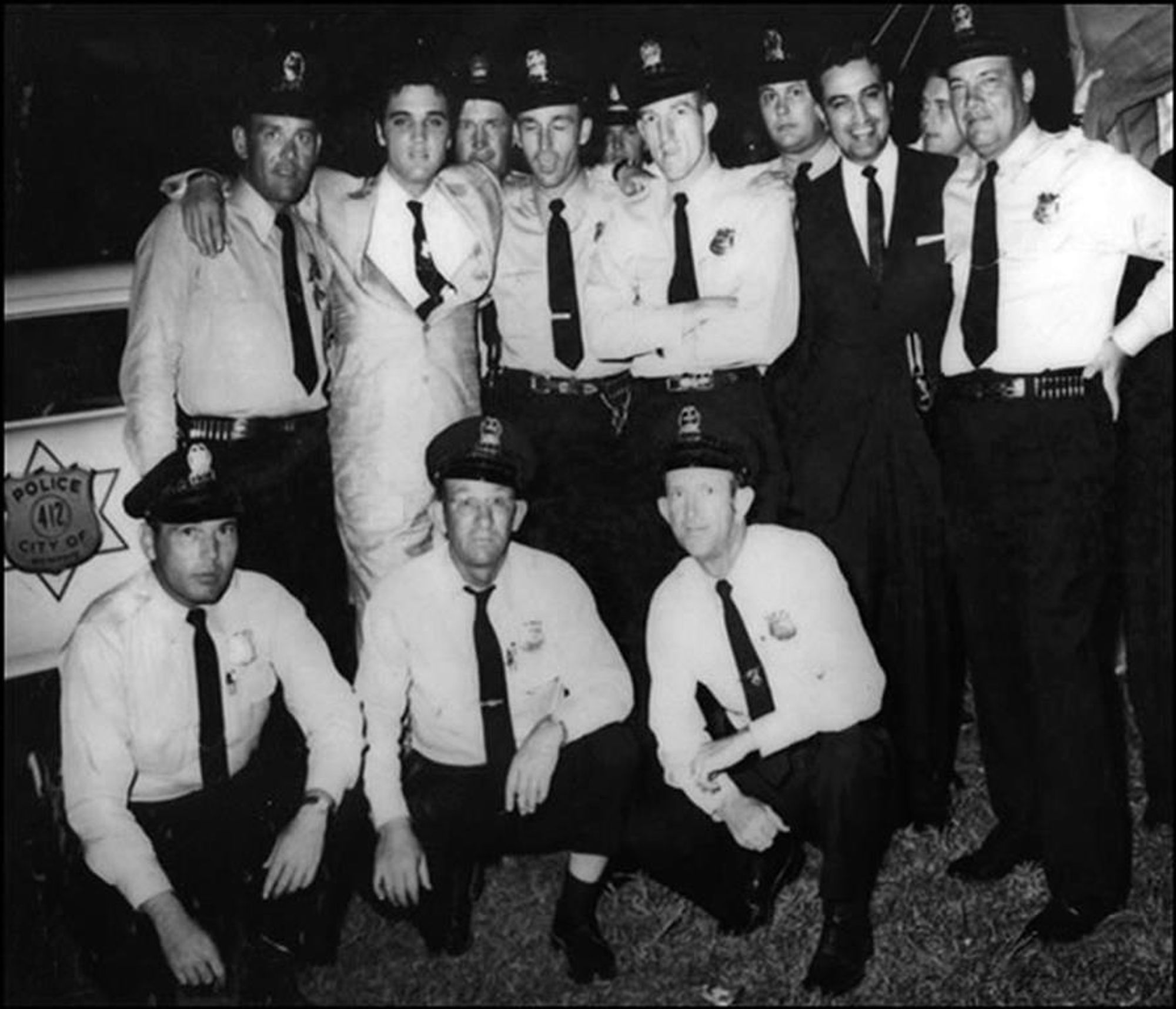
Elvis’ respect and admiration of the profession led to a collection of badges, with this particular one being presented to Presley by Shelby County Sheriff Roy Nixon on February 10, 1972, when he was also appointed chief deputy sheriff. He then took the badge, number six, added the diamonds and rubies to it, and carried it with him for four years until he presented it to Nixon’s successor Billy Ray Schilling. Sheriff Schilling then removed his own Sheriff’s Badge with the number one on it, indicating the highest rank in Shelby County, and presented it to the King.
This badge is a perfect microcosm of Elvis’ glitz and glam, his deep appreciation for law enforcement, plus the charity and concern he showed to the community of Memphis, TN.
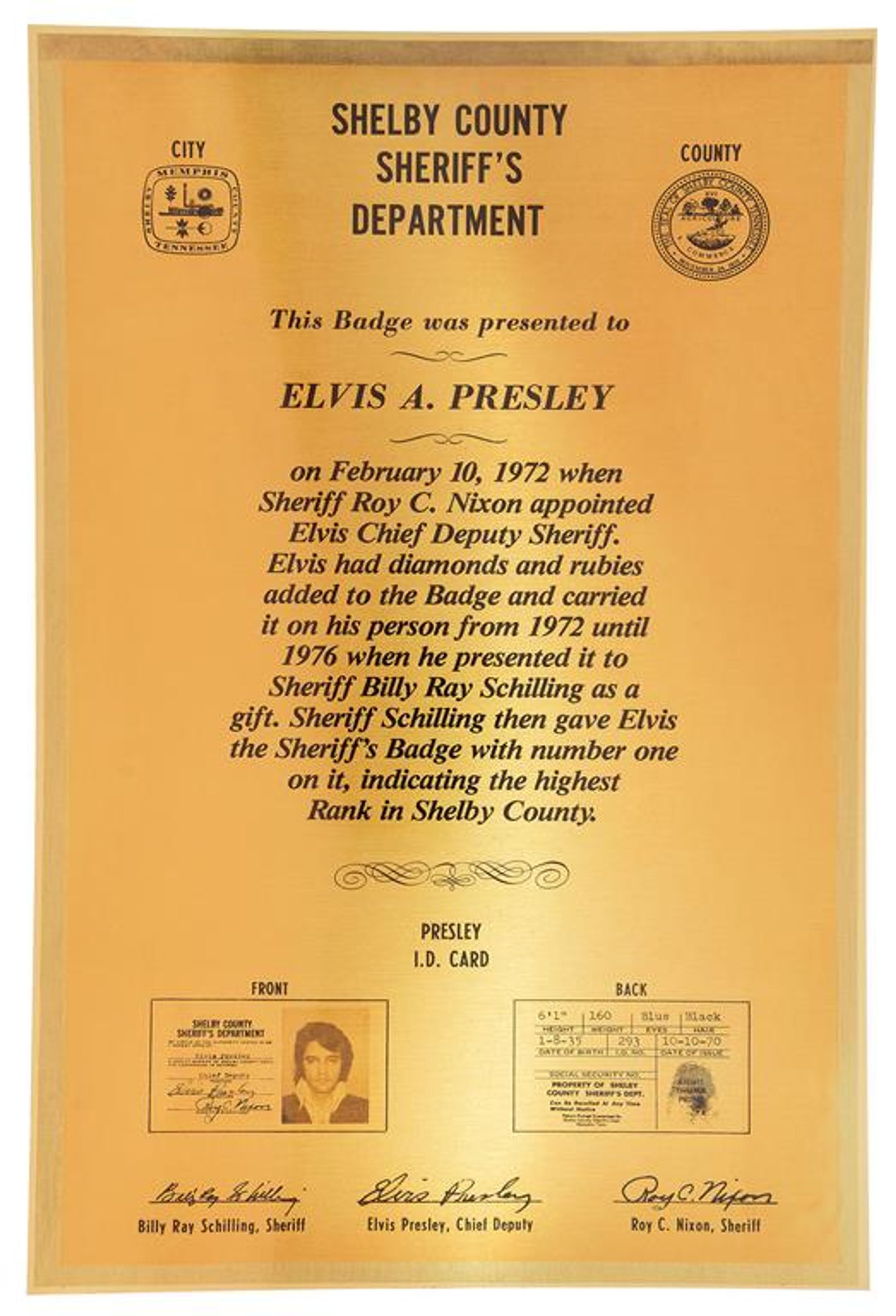
Elvis Presley Signed Contract to Purchase Graceland
Mount Vernon, Monticello, Falling Water, Graceland. When pressed to name famous American homes, Graceland is a name that invariably rises to the top. It is synonymous with Elvis Presley and his legend. This contract, offered by Rock Island Auction Company, is the real estate transaction for Graceland dated March 17, 1957. Surprising that such an estate could be transacted on two simple pages, it represents a pivotal moment in the life of the King.
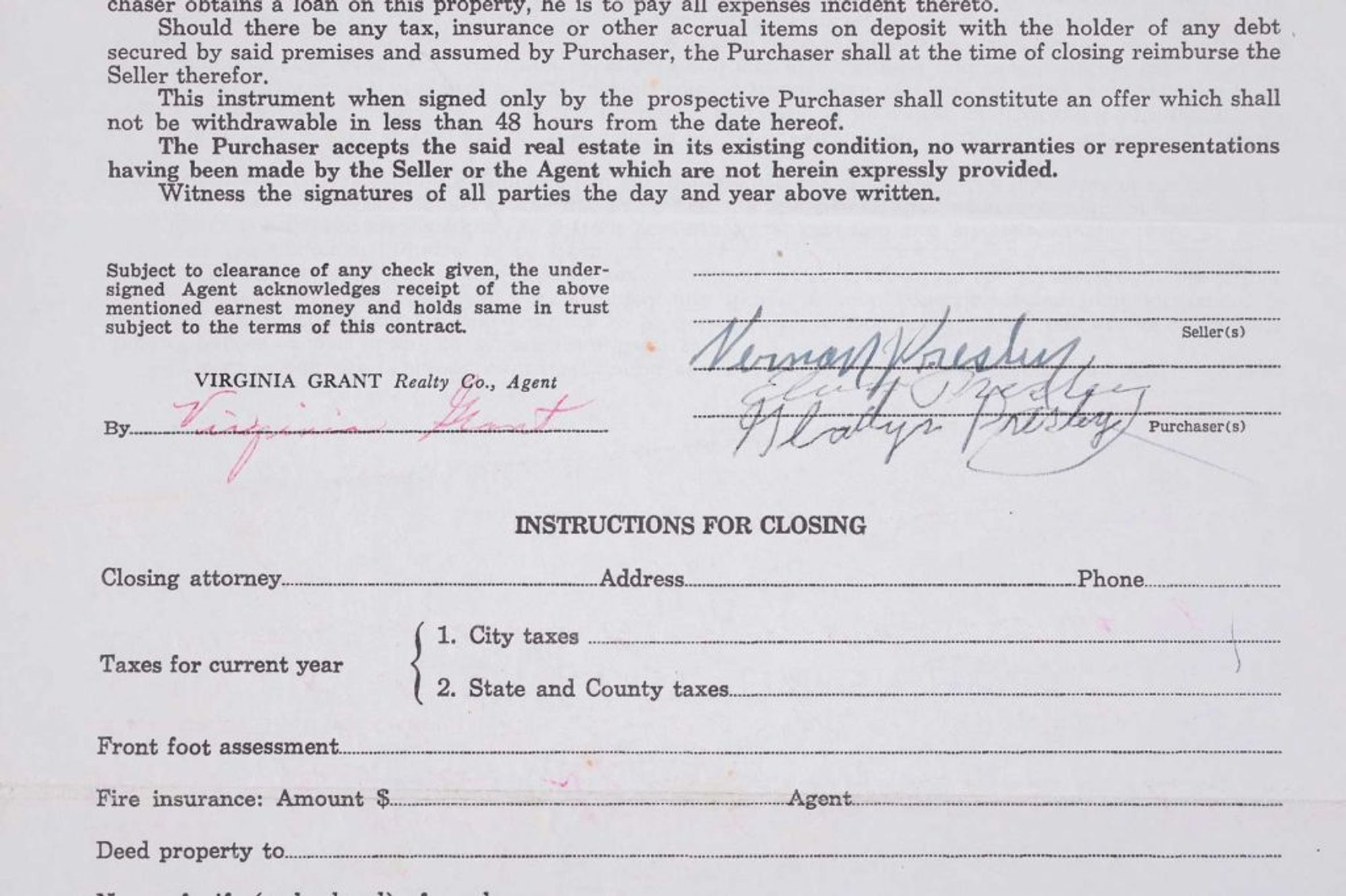
It is signed by Elvis, his parents, Vernon and Gladys Presley, and his real estate agent, Virginia Grant, who kept the contract from March 21, 1957 until May 25, 1995. Handwritten in red ink, Grant calls it the “first contract” in several accompanying documents. Also included with the documents is Grant’s book recounting the story of the sale, How Elvis Bought Graceland. The paperwork indicates that Elvis purchased Graceland for $102,500 at the age of 22 making it a great piece of Elvis memorabilia. As part of the offer, he traded the Presley’s home at 1034 Audubon Drive for $55,000. The remainder of the purchase was funded by a $10,000 cash deposit and a $35,500 mortgage.

Photo courtesy of Graceland.com
Documents of the “Memphis Mafia”
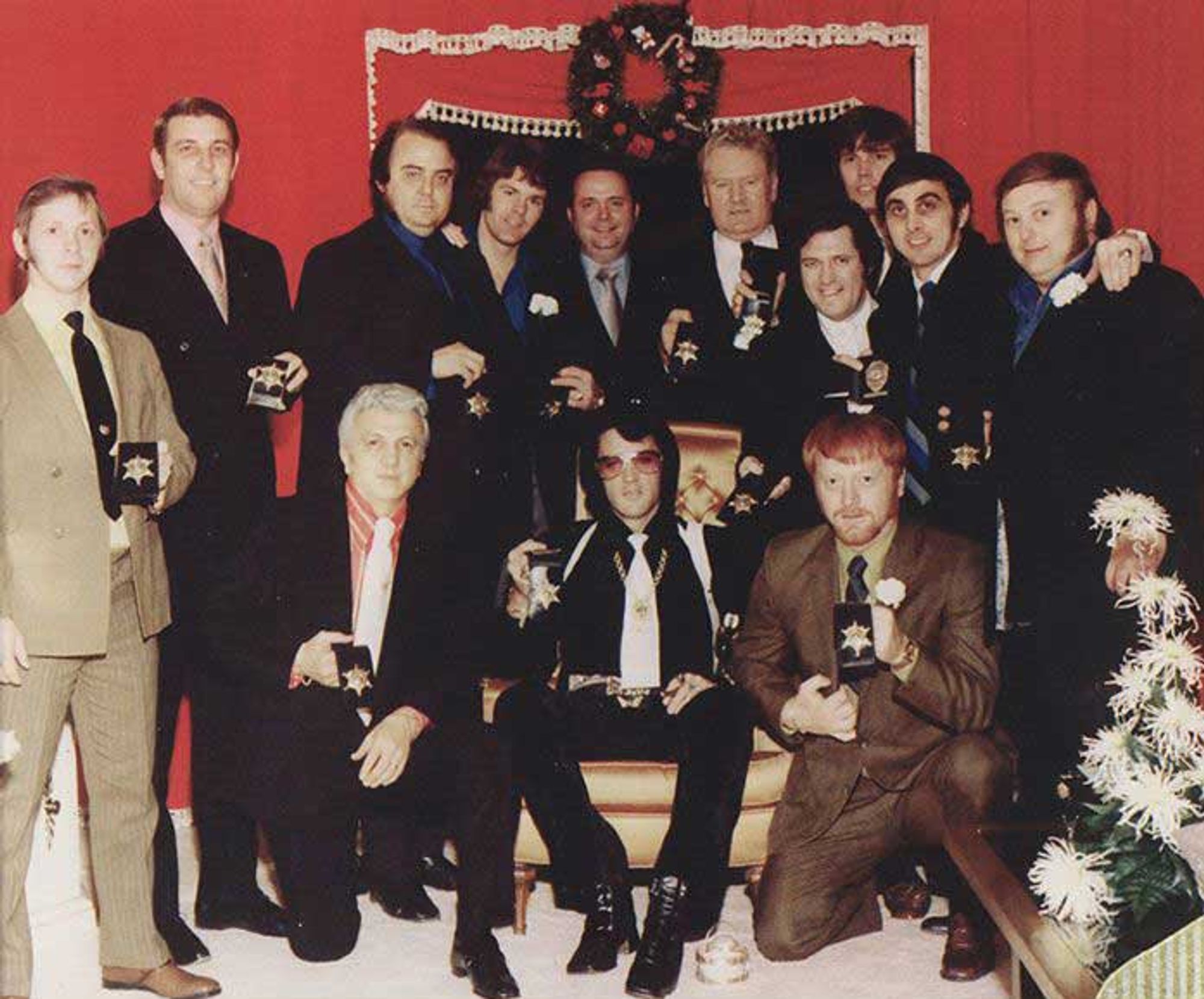
The “Memphis Mafia” is the nickname given by the media to Elvis and several of his closest friends who were deputized by the Shelby County Sheriff’s Department. He liked the name and it stuck. Think of them as a “Rat Pack” of boyhood friends, fellow musicians, and trusted associates. They were on Elvis’ payroll for a myriad of specific tasks and helped the King maintain an air of privacy, as well as a lifestyle of long nights often fueled by pharmaceutical drugs.
In this lot are dozens of documents, six of which are signed by Elvis himself. They include Elvis’ special deputy applications, affidavits, cover letters, Elvis’ authorization to carry a firearm, a rail travel card, special deputy ID cards, numerous documents related to his father, and much more. Please keep an eye out for the publishing of our online catalog for a full description of the numerous items included in this lot.
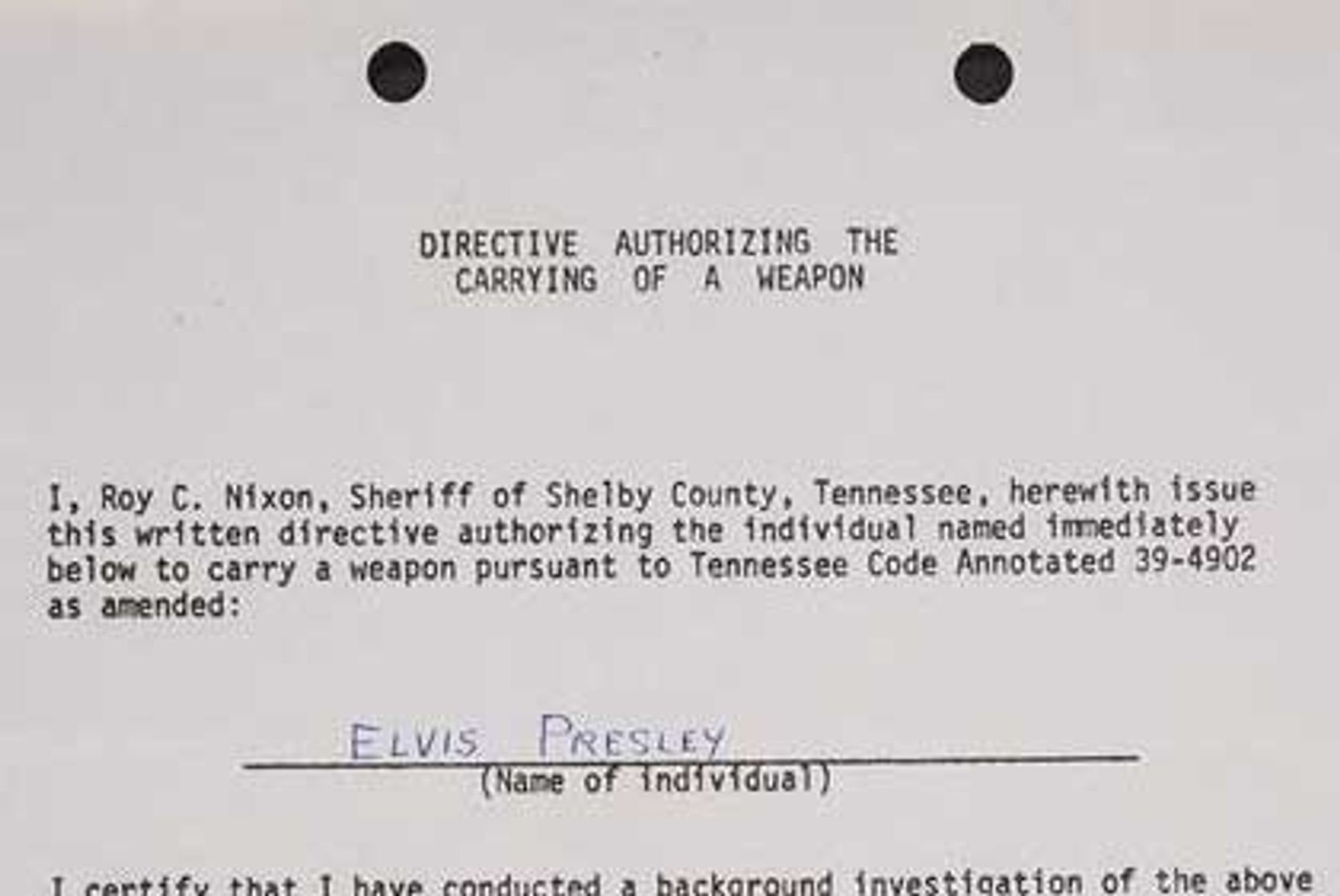

.gif)

.gif)
.gif)
.gif)

